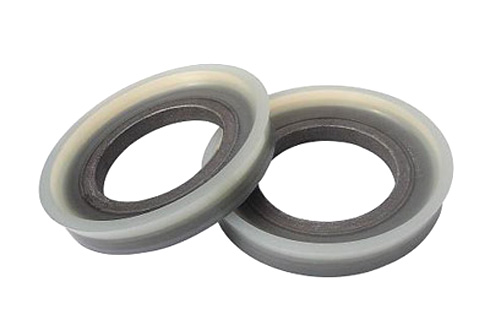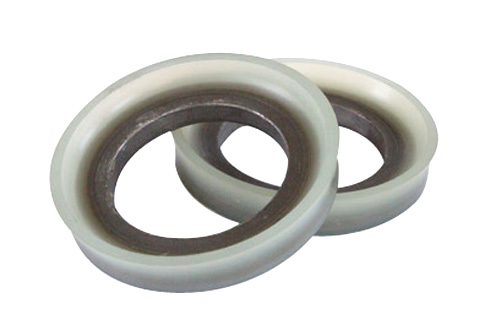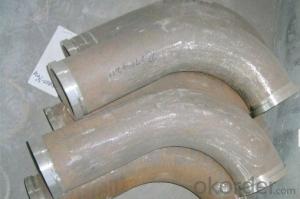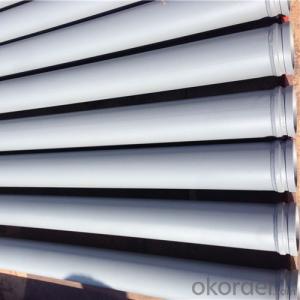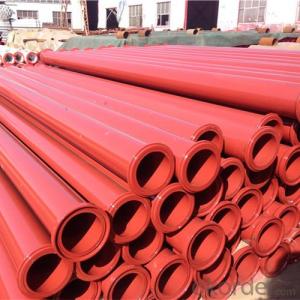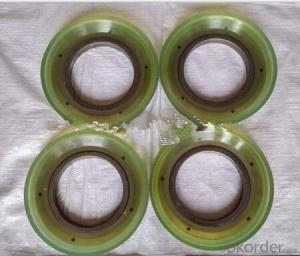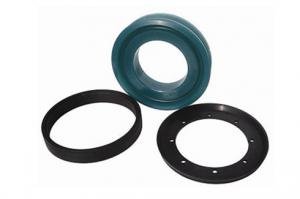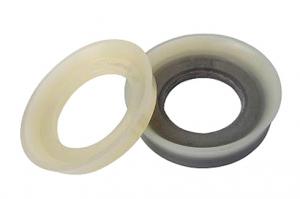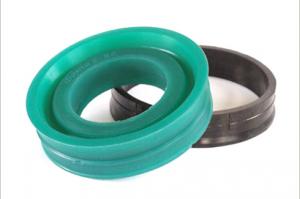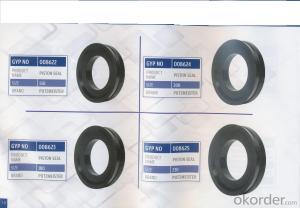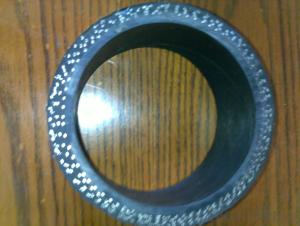Concrete Pump Kyokuto Seal Piston DN205 &- DN225
- Loading Port:
- China Main Port
- Payment Terms:
- TT OR LC
- Min Order Qty:
- -
- Supply Capability:
- -
OKorder Service Pledge
Quality Product, Order Online Tracking, Timely Delivery
OKorder Financial Service
Credit Rating, Credit Services, Credit Purchasing
You Might Also Like
Brand: Schwing, Putzmeister, Sany,Zoomlion, IHI, Kyokuto, Sermac
Other products:
1) ST52 steel pipe, elbow, reducer
2) Wear-resisting board and Cuts ink
3) Coupling and seal ring for Putzmeister,Schwing, Sany
4) Rubber hose
5) Cleaning series and others
- Q: How does a concrete pump agitator motor prevent concrete from settling?
- A concrete pump agitator motor prevents concrete from settling by constantly agitating the mixture. The motor is typically equipped with paddles or blades that rotate inside the mixing drum, ensuring that the concrete remains in a homogeneous state. When concrete is being transported, it tends to separate due to gravity and the natural settling of heavier aggregates. This can result in a non-uniform consistency, with denser materials sinking to the bottom and water rising to the top. The agitator motor counteracts this settling process by continuously stirring the concrete. The rotating paddles or blades create a turbulent flow within the mixing drum, preventing the heavier aggregates from settling and maintaining a consistent mixture. This agitation helps to evenly distribute the cement, aggregates, water, and any additional additives throughout the concrete, resulting in a more uniform and reliable end product. By preventing the settling of concrete, the agitator motor ensures that the mixture is consistently workable and can be pumped or poured without any blockages or inconsistencies. This is especially crucial during construction projects where precise and consistent concrete placement is required. In summary, a concrete pump agitator motor prevents settling by agitating the mixture, keeping it homogeneous and ensuring a consistent flow during pumping or pouring operations.
- Q: What are the advantages of using pre-assembled spare parts for concrete pumps?
- There are multiple benefits to utilizing pre-assembled spare parts for concrete pumps. To begin with, the use of pre-assembled spare parts guarantees a swift and efficient replacement process. As these parts come already assembled, they can be effortlessly installed without the need for additional time or effort to assemble them. This helps to reduce downtime and increase productivity on construction sites, as the concrete pump can be swiftly repaired and put back into operation. Additionally, the utilization of pre-assembled spare parts ensures a high level of quality and compatibility. These parts are produced by the original equipment manufacturer (OEM) or authorized suppliers, guaranteeing that they meet the necessary standards and specifications. By employing authentic pre-assembled parts, the performance and longevity of the concrete pump are maintained, minimizing the risk of malfunctions or breakdowns. Another advantage is the cost-effectiveness of pre-assembled spare parts. While the initial cost of these parts may be slightly higher than individual components, they often prove to be more cost-effective in the long run. By purchasing pre-assembled parts, construction companies can avoid the extra costs associated with assembly, such as labor and time. Additionally, using high-quality pre-assembled parts reduces the need for frequent replacements and repairs, saving money on maintenance and downtime expenses. Furthermore, pre-assembled spare parts offer convenience and reliability. Construction projects frequently have strict deadlines, and any delays can be expensive. By having pre-assembled spare parts readily available, construction teams can promptly address any breakdowns or failures, minimizing disruptions to the project timeline. Additionally, the reliability of these parts ensures that the concrete pump will consistently and efficiently operate, reducing the risk of unexpected issues on the construction site. In conclusion, the advantages of utilizing pre-assembled spare parts for concrete pumps encompass quick and efficient replacement, high quality and compatibility, cost-effectiveness, as well as convenience and reliability. By adopting these pre-assembled parts, construction companies can ensure smooth operations, minimize downtime, and maximize productivity on their projects.
- Q: How can one ensure proper functioning of concrete pump spare parts after installation?
- To ensure proper functioning of concrete pump spare parts after installation, it is important to follow a few key steps. Firstly, it is crucial to carefully inspect and clean the parts before installation to ensure they are free from any debris or damage. Additionally, it is essential to use high-quality parts from reputable manufacturers to ensure durability and reliability. Regular maintenance and lubrication of the spare parts is also necessary to prevent wear and tear. Lastly, it is important to operate the concrete pump within its specified limits and avoid overloading, as this can cause stress on the spare parts and lead to malfunctioning.
- Q: Are there any specific guidelines for the installation of wear plates or cutting rings in concrete pump spare parts?
- Yes, there are specific guidelines for the installation of wear plates and cutting rings in concrete pump spare parts. These guidelines are important to ensure the proper functioning and longevity of the pump. 1. Firstly, it is important to clean the surface where the wear plate and cutting ring will be installed. Any debris, dust, or old material should be removed to ensure a smooth and secure fit. 2. The wear plate and cutting ring should be inspected for any damage or defects before installation. Any parts that are worn out or damaged should be replaced to avoid any potential issues during operation. 3. Apply a thin layer of lubricant or grease to the surface where the wear plate and cutting ring will be installed. This will help with the alignment and ease of installation. 4. Carefully align the wear plate and cutting ring with the designated slots or grooves in the concrete pump. It is crucial to ensure that they are accurately positioned to avoid misalignment or premature wear. 5. Use appropriate tools or equipment to secure the wear plate and cutting ring in place. This may involve tightening bolts, screws, or other fasteners. It is important to follow the manufacturer's instructions and torque specifications to ensure proper installation. 6. After installation, perform a visual inspection to ensure that the wear plate and cutting ring are securely in place and properly aligned. Any signs of misalignment or loose parts should be addressed immediately. 7. Regular maintenance and inspection of the wear plates and cutting rings are essential to identify any signs of wear or damage. It is recommended to follow the manufacturer's recommendations for maintenance intervals and replacement schedules. By following these specific guidelines, you can ensure the proper installation and function of wear plates and cutting rings in concrete pump spare parts, leading to improved performance and extended lifespan of the equipment.
- Q: How can a damaged concrete pump hopper affect the pumping process?
- A damaged concrete pump hopper can have several negative impacts on the pumping process. Firstly, a damaged hopper can lead to a decrease in efficiency and productivity. The hopper is responsible for holding and feeding the concrete mixture into the pump, and any damage to it can result in a disruption of the continuous flow of concrete. This can lead to frequent interruptions in the pumping process, causing delays and reducing the overall output of the pump. Secondly, a damaged hopper can affect the quality of the concrete being pumped. The hopper is designed to ensure proper mixing and consistency of the concrete mixture before it is pumped. If the hopper is damaged, it may not be able to effectively mix the concrete, leading to inconsistencies in the mixture. This can result in poor-quality concrete being pumped, which can compromise the structural integrity and durability of the final product. Moreover, a damaged hopper can pose safety risks for the workers involved in the pumping process. A damaged hopper may have sharp edges or loose parts that can cause injury if not properly addressed. Additionally, if the hopper is not functioning properly, it may lead to clogs or blockages in the pump, which can cause pressure build-up and potential accidents. Lastly, a damaged hopper can increase maintenance and repair costs. A hopper that is not in optimal condition may require frequent repairs or even replacement, which can be costly in terms of time and money. Regular maintenance and inspection of the hopper is crucial to identify any damages early on and prevent them from escalating into more significant issues. In conclusion, a damaged concrete pump hopper can significantly affect the pumping process by reducing efficiency, compromising the quality of the concrete, posing safety risks, and increasing maintenance costs. Regular inspection, maintenance, and timely repairs are essential to ensure the smooth operation of the pump and the delivery of high-quality concrete.
- Q: How long does a concrete pump piston typically last?
- The lifespan of a concrete pump piston can vary depending on several factors. On average, a concrete pump piston typically lasts between 20,000 to 40,000 cubic yards of pumping. However, this estimate can be affected by a variety of factors such as the quality of the concrete being pumped, the maintenance and care of the pump, the operating conditions, and the expertise of the operator. Regular maintenance and servicing, including cleaning and lubricating the piston, can significantly extend its lifespan. It is also important to monitor the wear and tear of the piston regularly to ensure its optimal performance and to replace it when necessary.
- Q: How often should hydraulic cylinders be inspected or replaced in a concrete pump?
- Hydraulic cylinders in a concrete pump should be inspected regularly, ideally every 6 to 12 months, to ensure their proper functioning. Replacement of hydraulic cylinders should be done only when necessary, such as in cases of significant wear and tear, severe damage, or if they fail to meet safety standards.
- Q: Do concrete pump spare parts come with a warranty?
- Yes, concrete pump spare parts do come with a warranty. The warranty period may vary depending on the manufacturer and the specific part being purchased. Generally, reputable manufacturers and suppliers offer warranties on their spare parts to provide assurance to customers about the quality and reliability of the product. It is important to carefully review the terms and conditions of the warranty to understand what is covered and for how long. If any defects or issues arise during the warranty period, customers can typically get a replacement or have the part repaired at no additional cost.
- Q: Can concrete pump spare parts be tested for compatibility with different types of concrete mixes?
- Yes, concrete pump spare parts can be tested for compatibility with different types of concrete mixes. These tests typically involve evaluating the performance, durability, and efficiency of the spare parts when used with various concrete compositions. This ensures that the spare parts can handle the specific requirements and characteristics of different concrete mixes effectively.
- Q: How can a faulty outrigger affect the stability of the pump?
- The stability of a pump can be significantly affected by a faulty outrigger. The outrigger serves as a crucial component that provides support and balance to the pump while it is in operation. Its role is to act as a stabilizer, preventing the pump from tipping over or vibrating excessively. When the outrigger is faulty, it fails to offer the necessary support and stability required for the pump to function properly. This can result in various stability issues. For instance, the pump becomes more susceptible to tipping over, particularly when it encounters uneven surfaces or strong vibrations. This poses a significant danger, especially if the pump is handling hazardous or flammable materials. Moreover, a faulty outrigger can cause excessive vibrations in the pump. These vibrations can accelerate the wear and tear of critical components, leading to premature failure. Additionally, they can inflict damage on the surrounding infrastructure or equipment, resulting in expensive repairs or even accidents. Furthermore, a faulty outrigger can impact the accuracy and efficiency of the pump's operation. When the pump is not adequately stabilized, it struggles to maintain a consistent flow rate or pressure, thereby affecting its overall performance. This can lead to inefficiencies, increased energy consumption, and even reduced productivity. To summarize, a faulty outrigger has detrimental consequences for the stability of a pump. It heightens the risk of accidents, induces excessive vibrations, and impairs the pump's performance and efficiency. Regular maintenance and inspections are crucial in ensuring that the outrigger and other support systems are functioning correctly, thereby maintaining the pump's stability and reliability.
Send your message to us
Concrete Pump Kyokuto Seal Piston DN205 &- DN225
- Loading Port:
- China Main Port
- Payment Terms:
- TT OR LC
- Min Order Qty:
- -
- Supply Capability:
- -
OKorder Service Pledge
Quality Product, Order Online Tracking, Timely Delivery
OKorder Financial Service
Credit Rating, Credit Services, Credit Purchasing
Similar products
Hot products
Hot Searches
Related keywords


